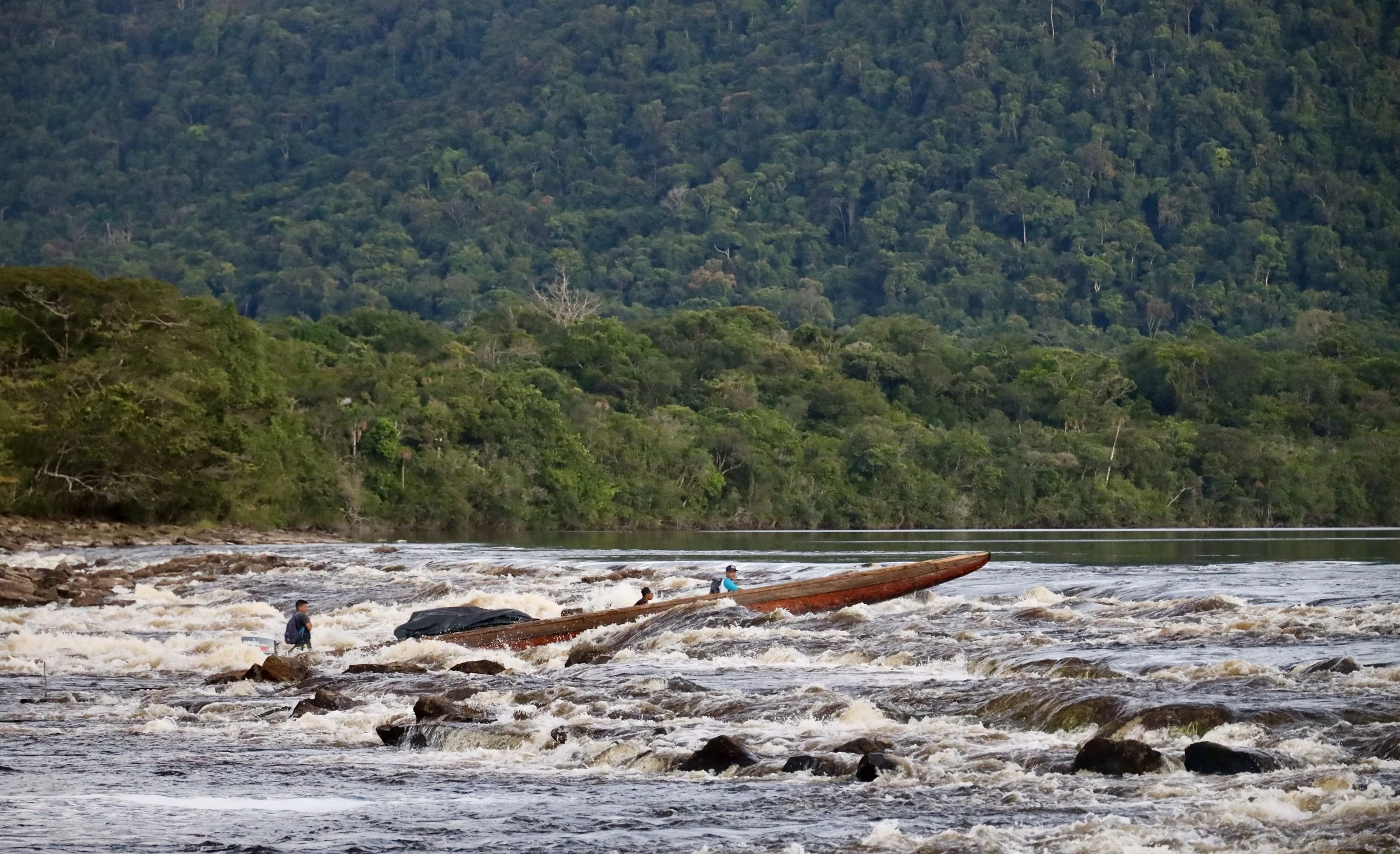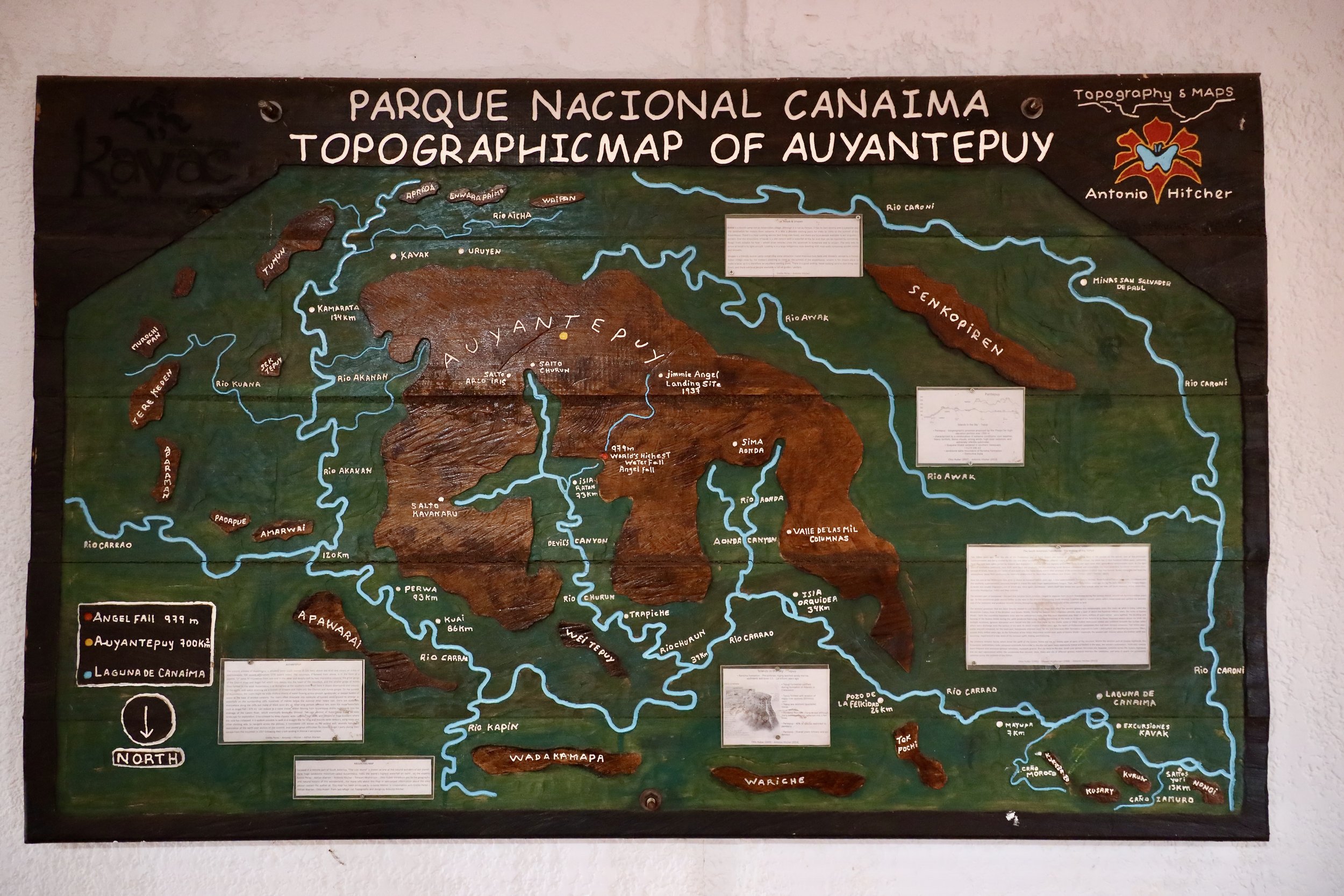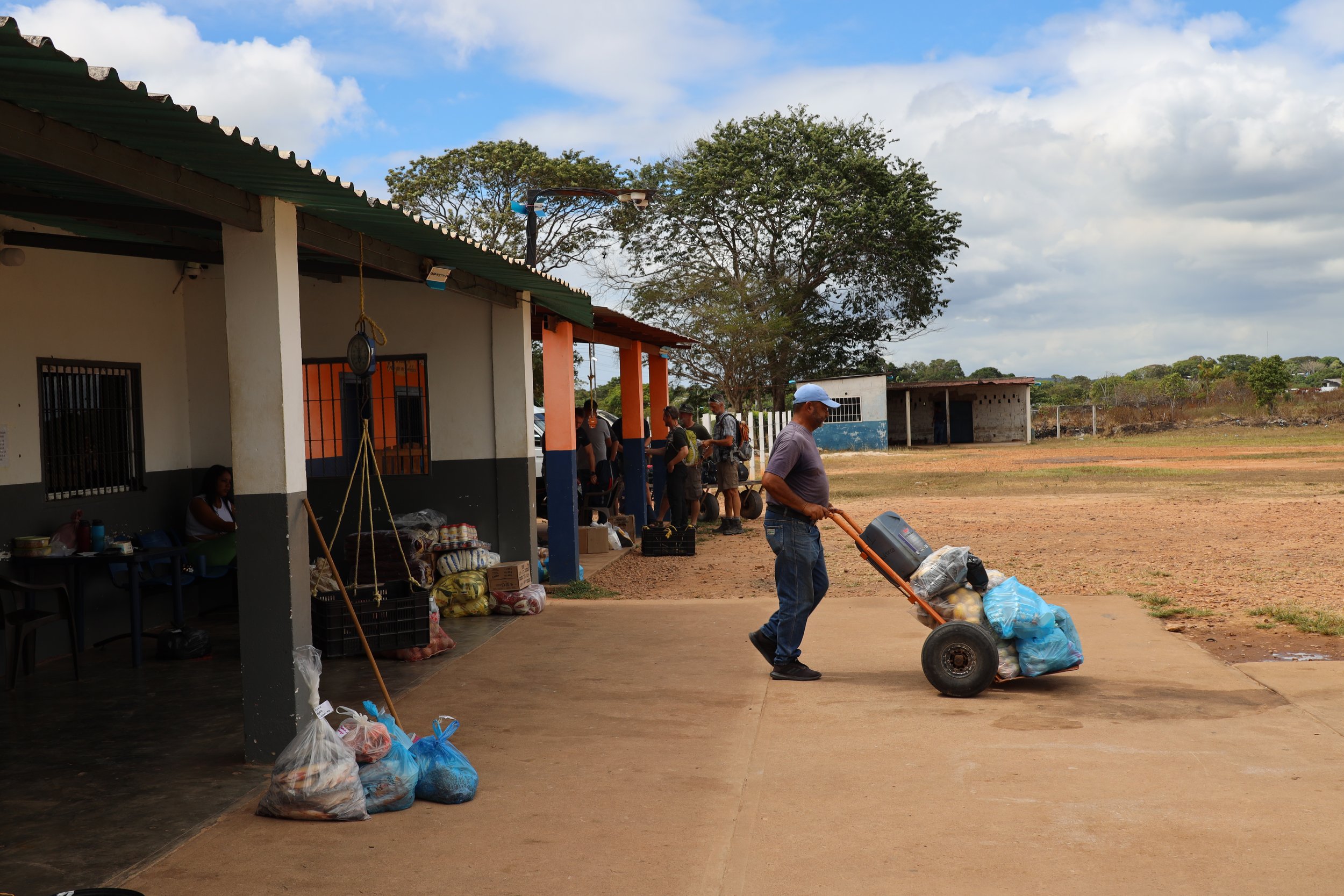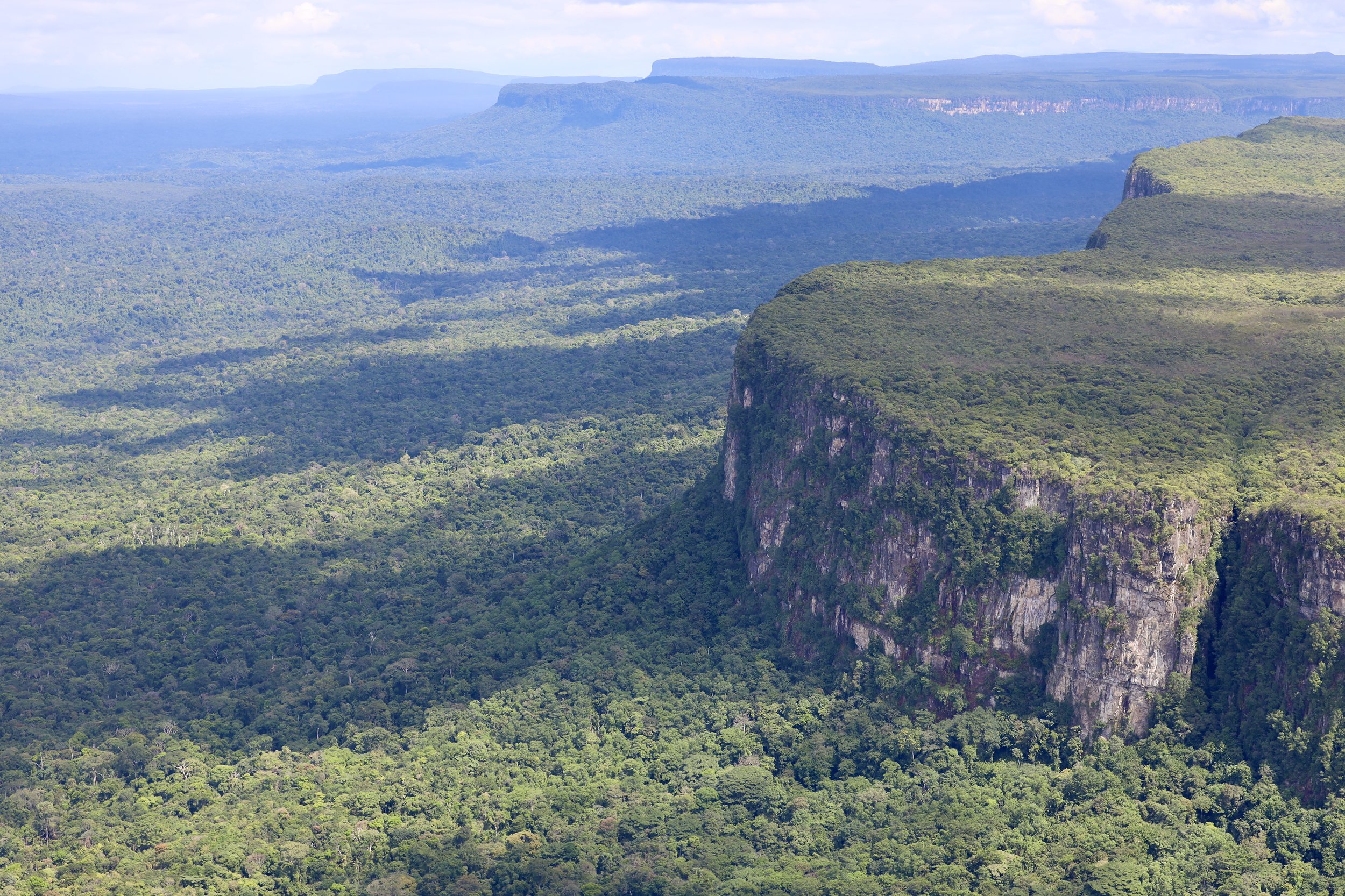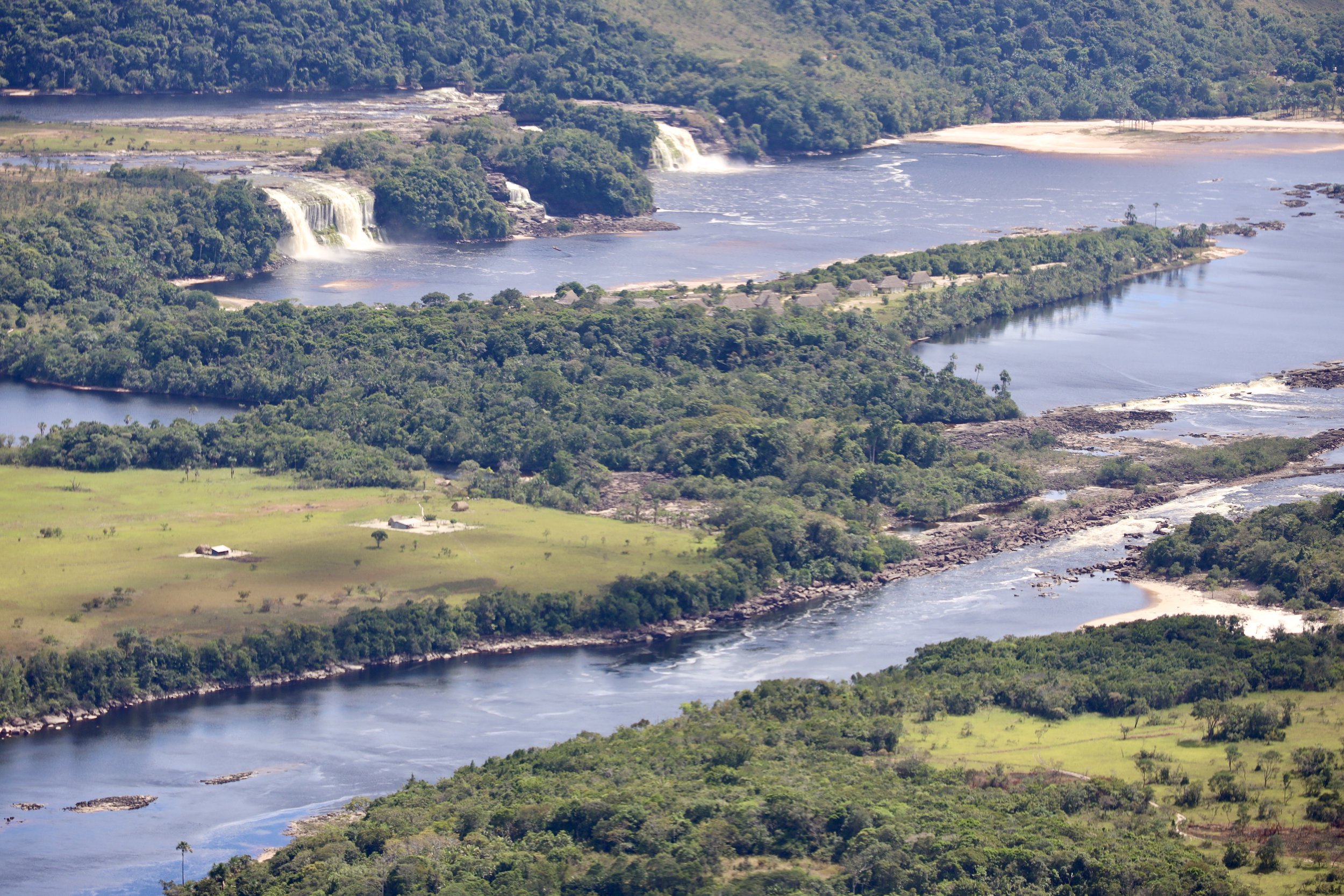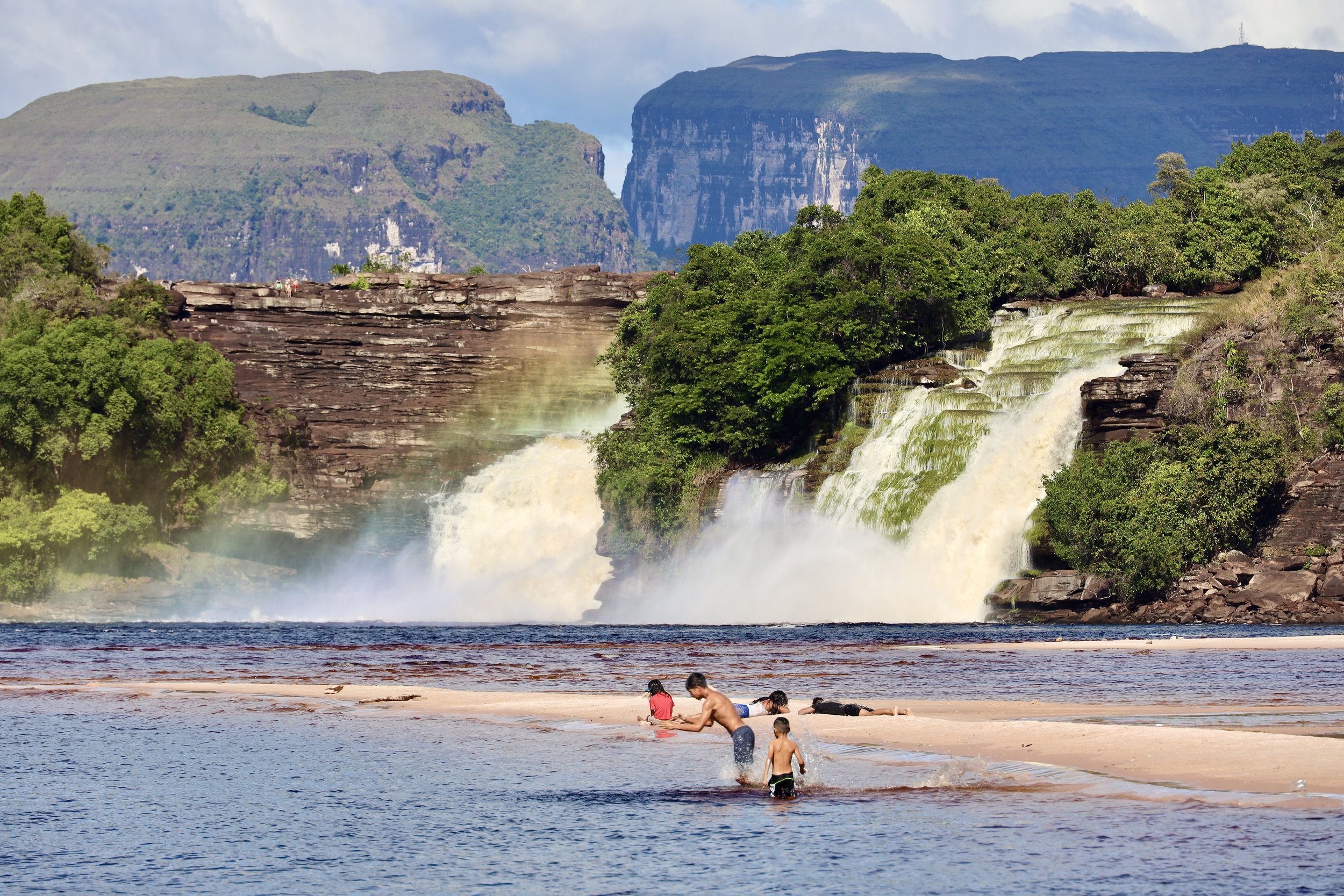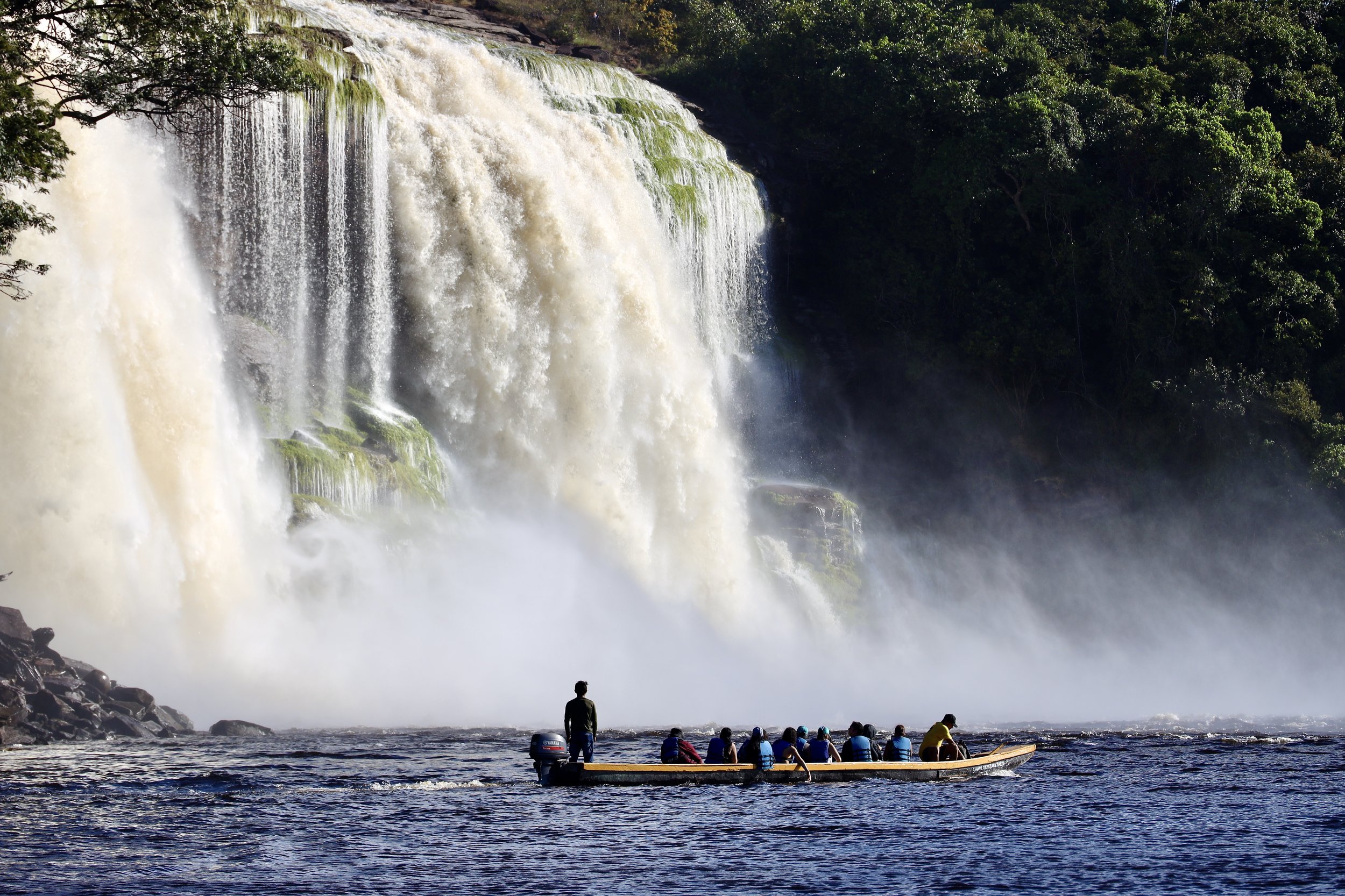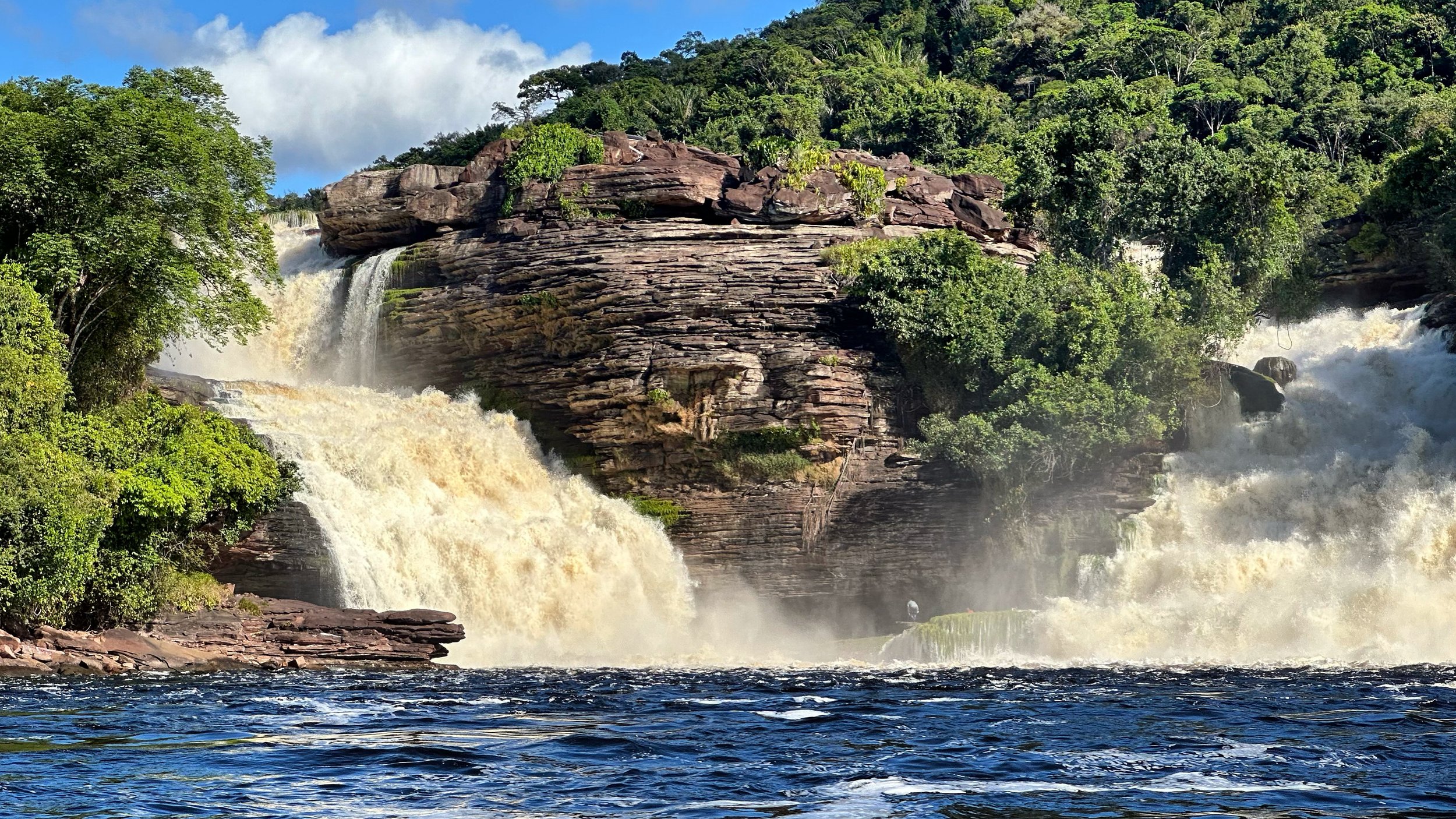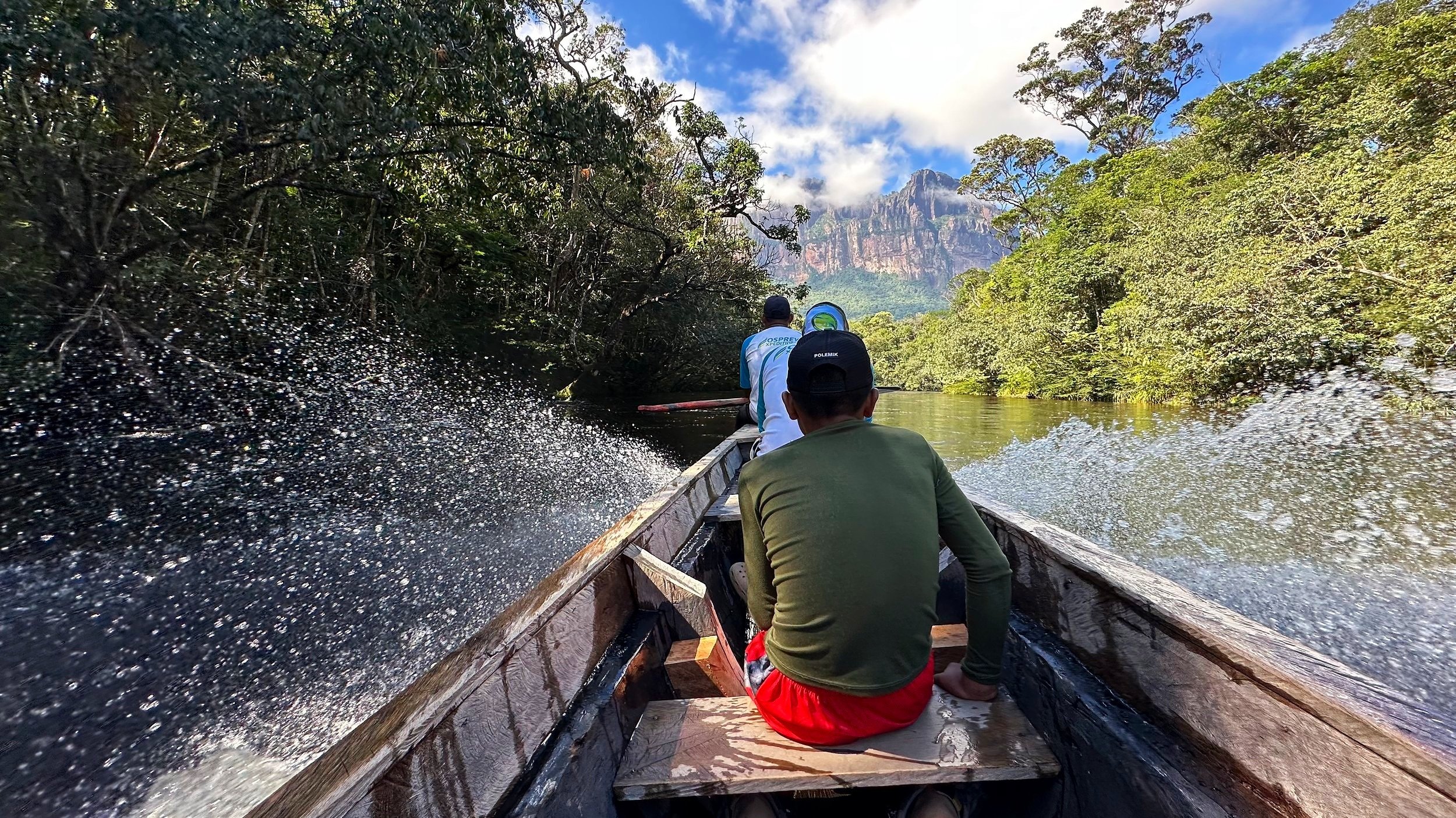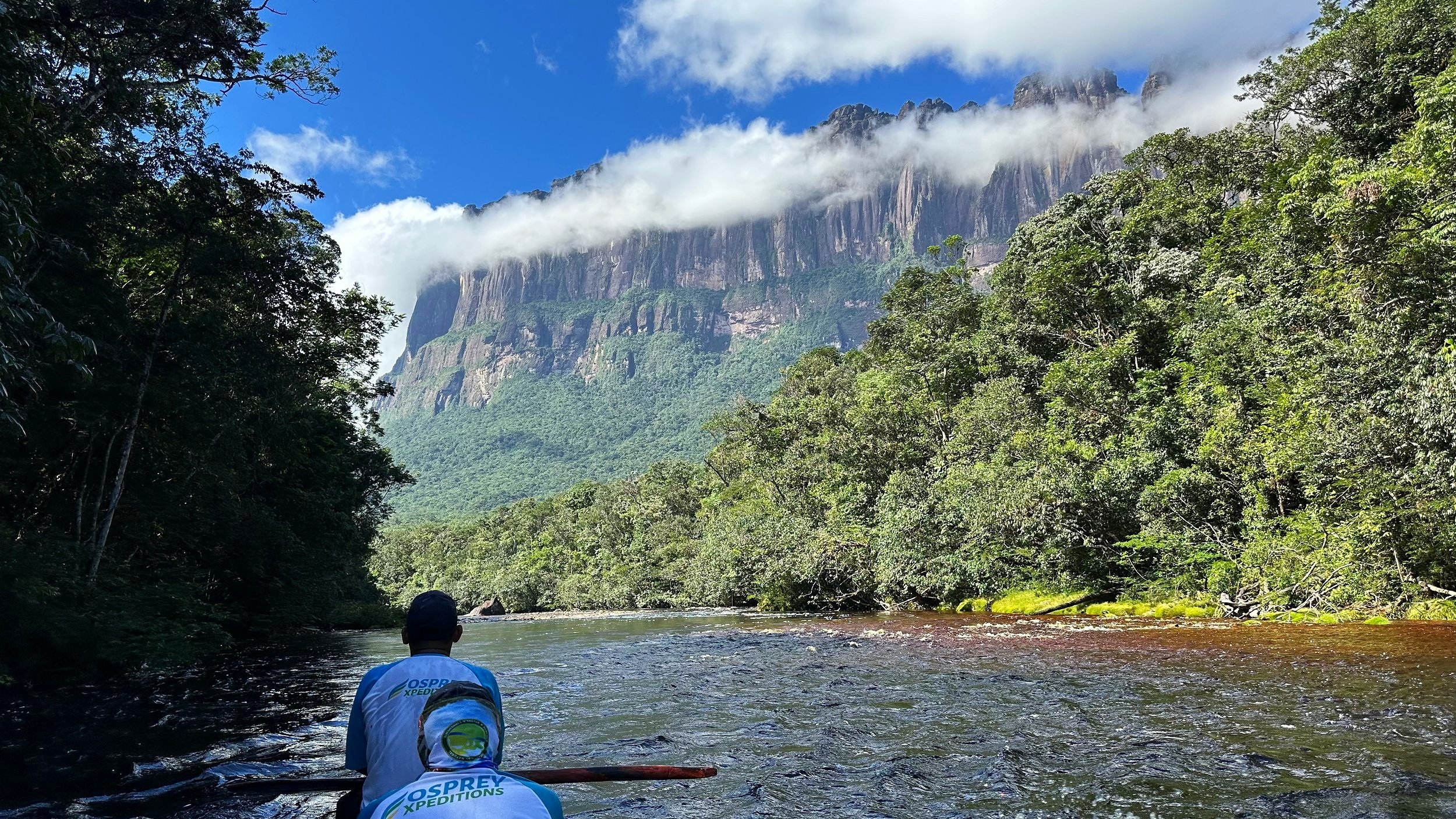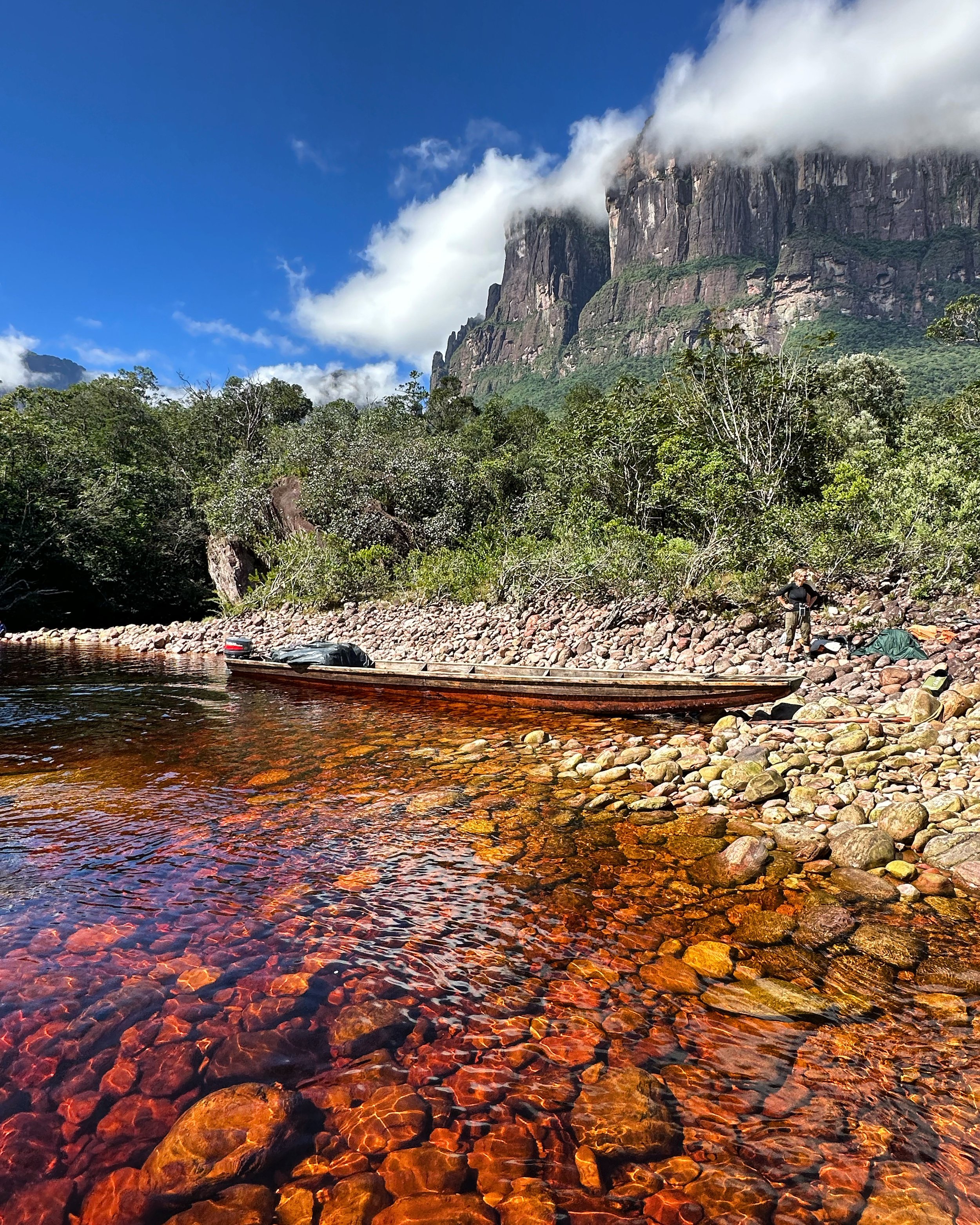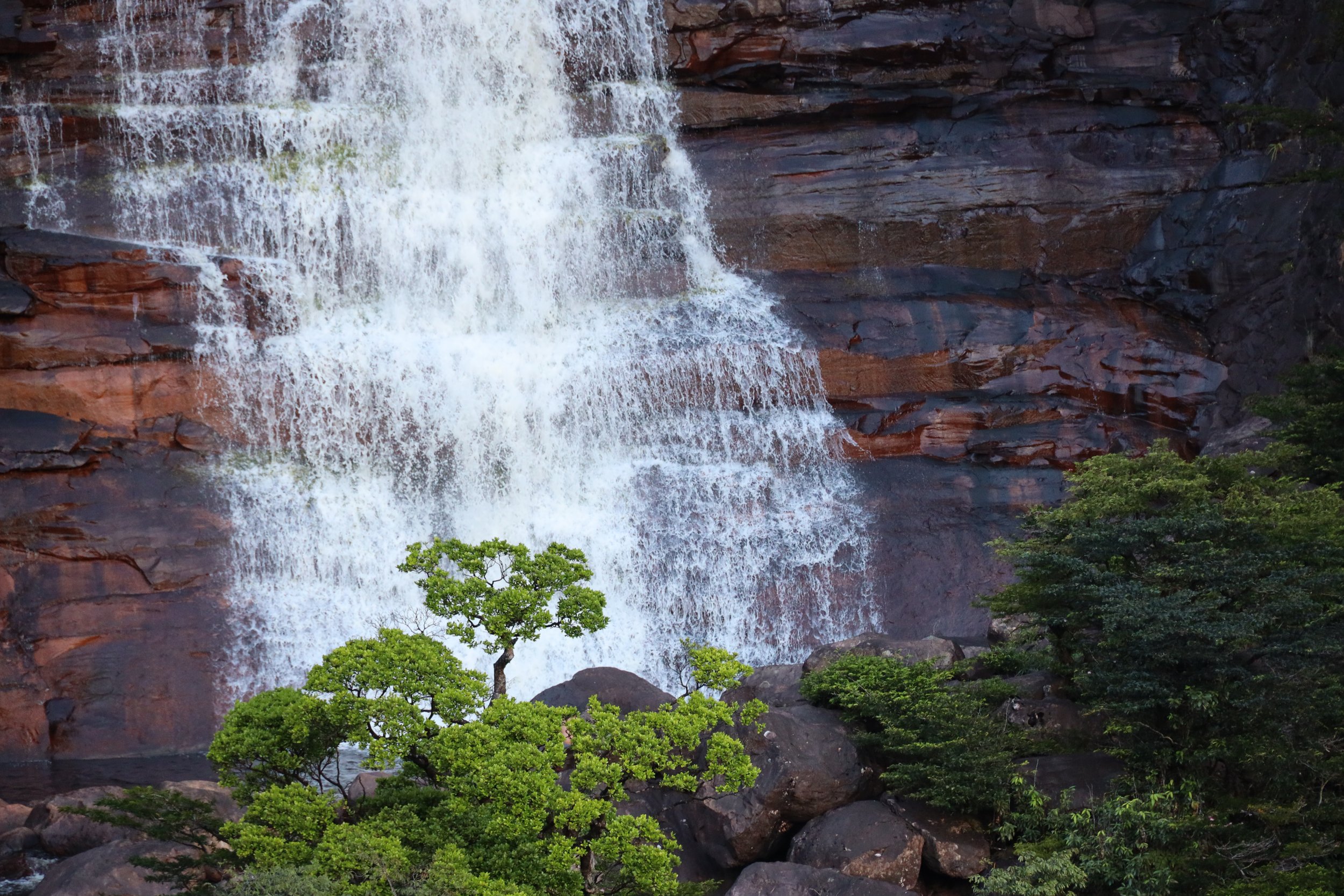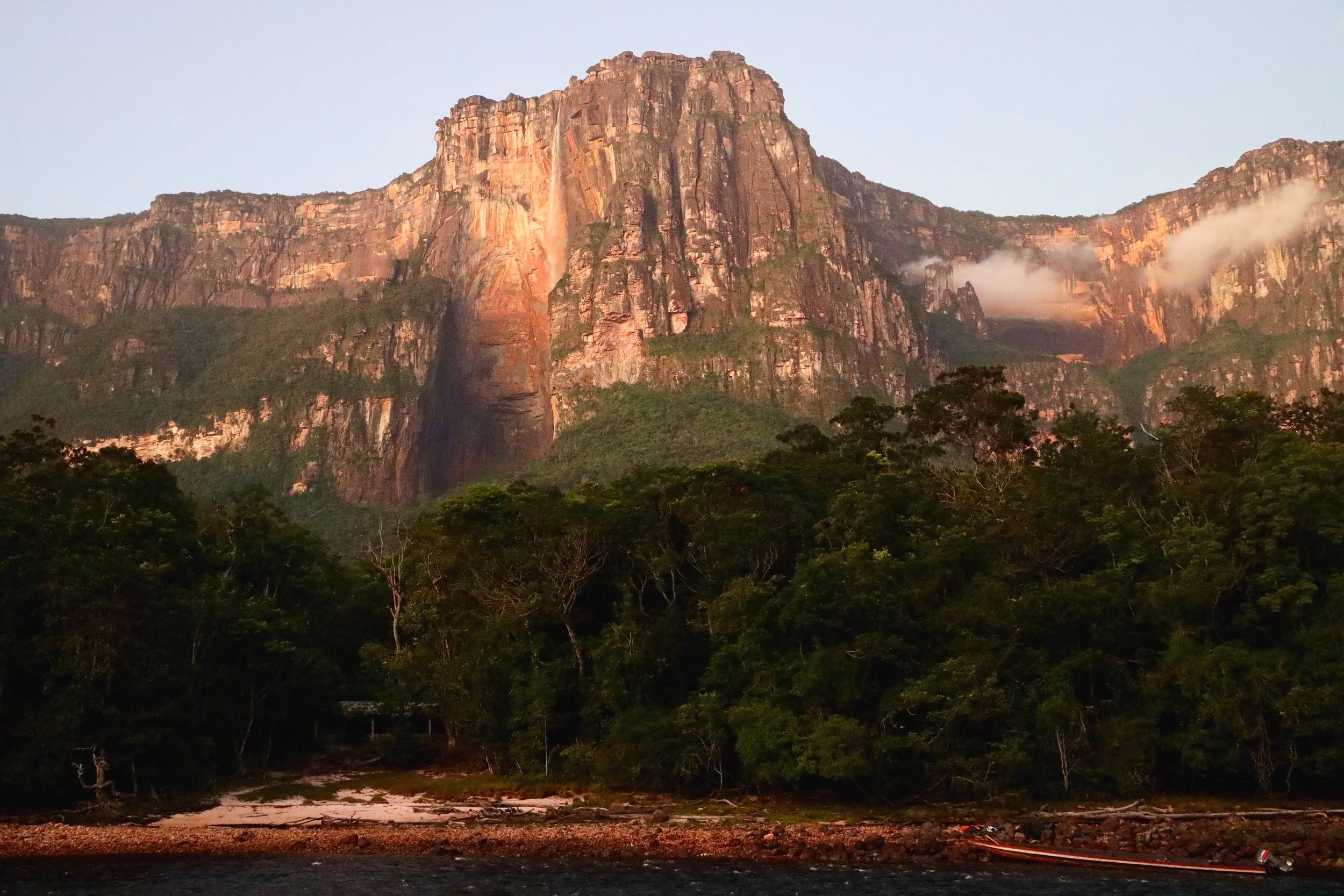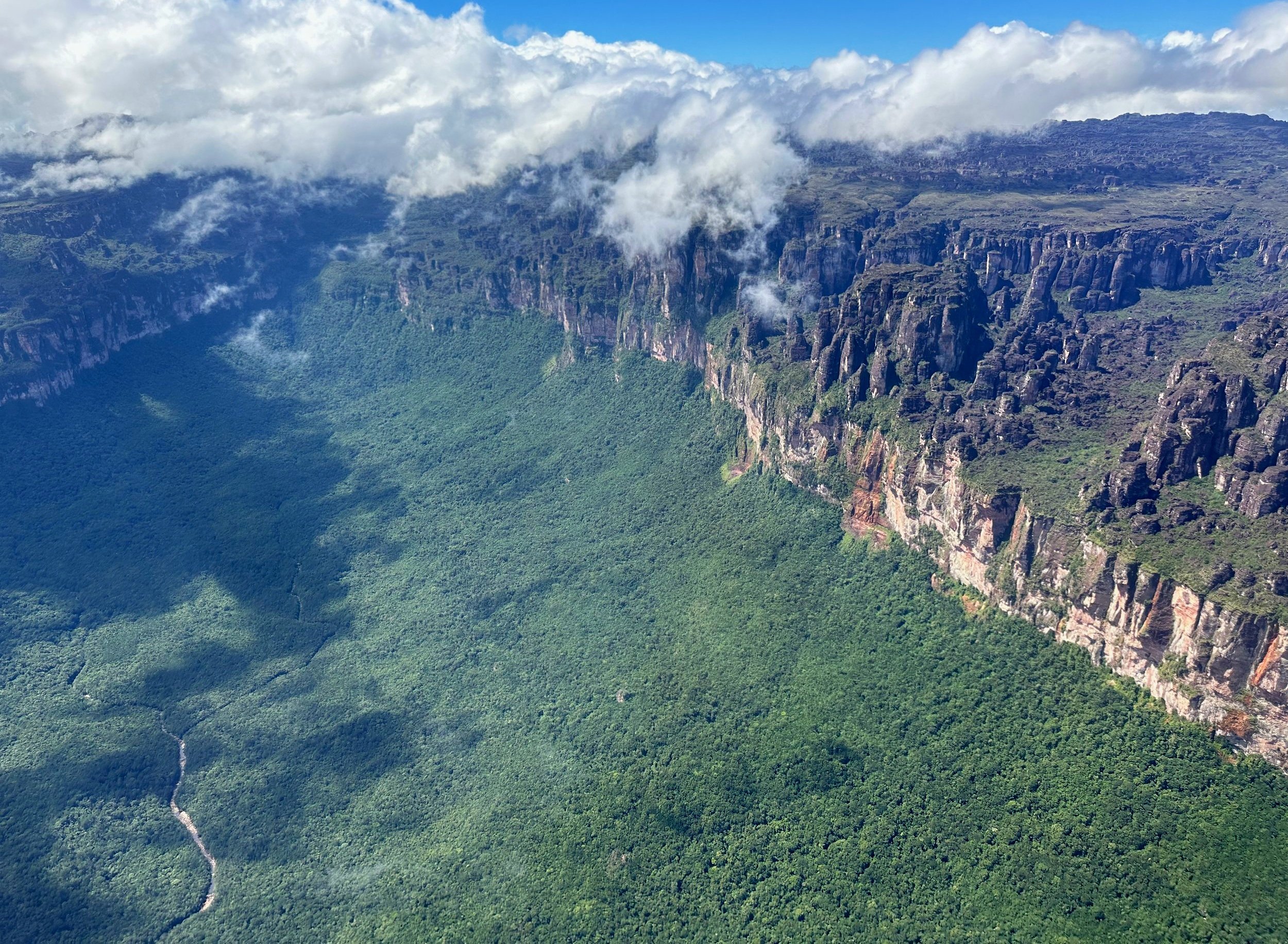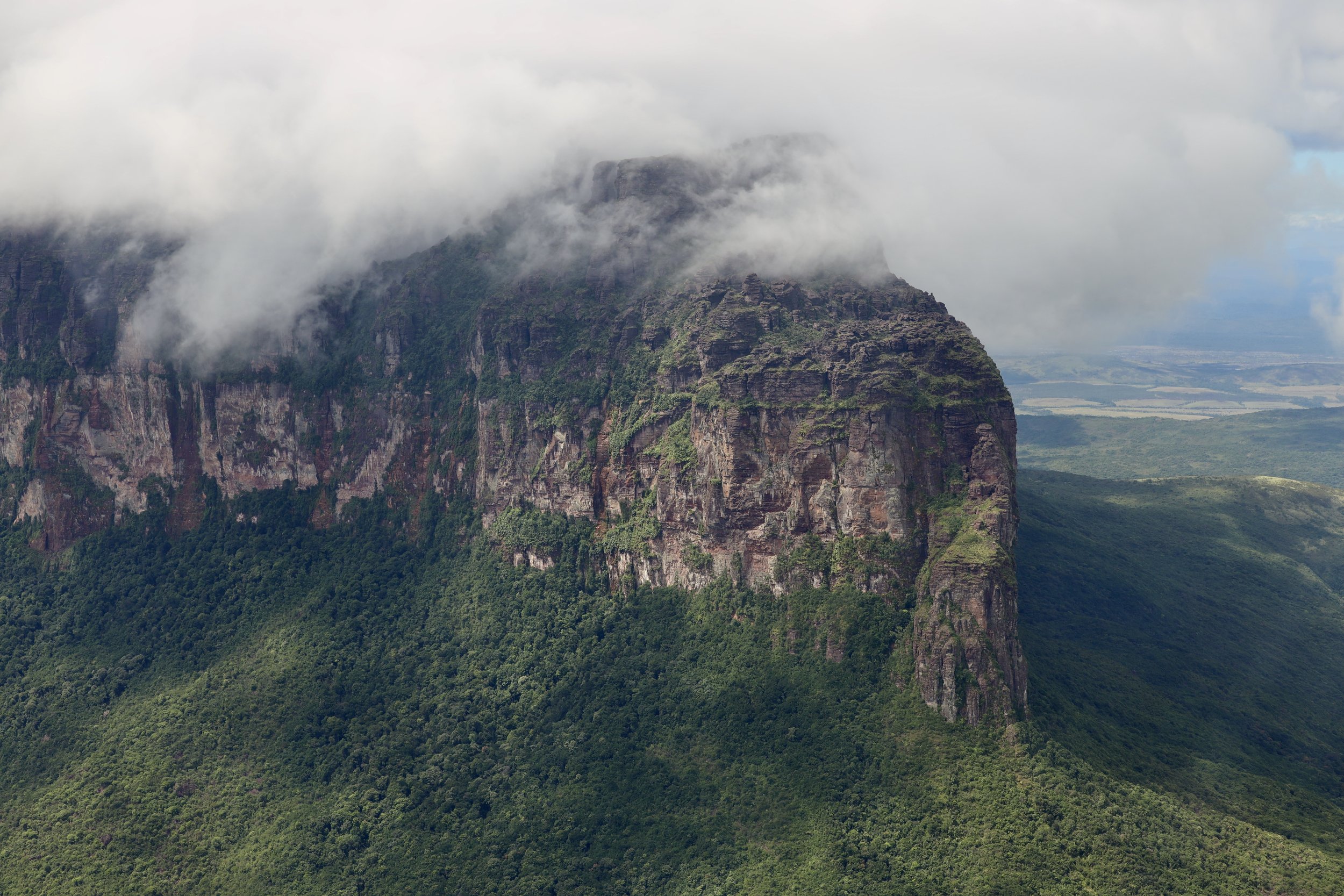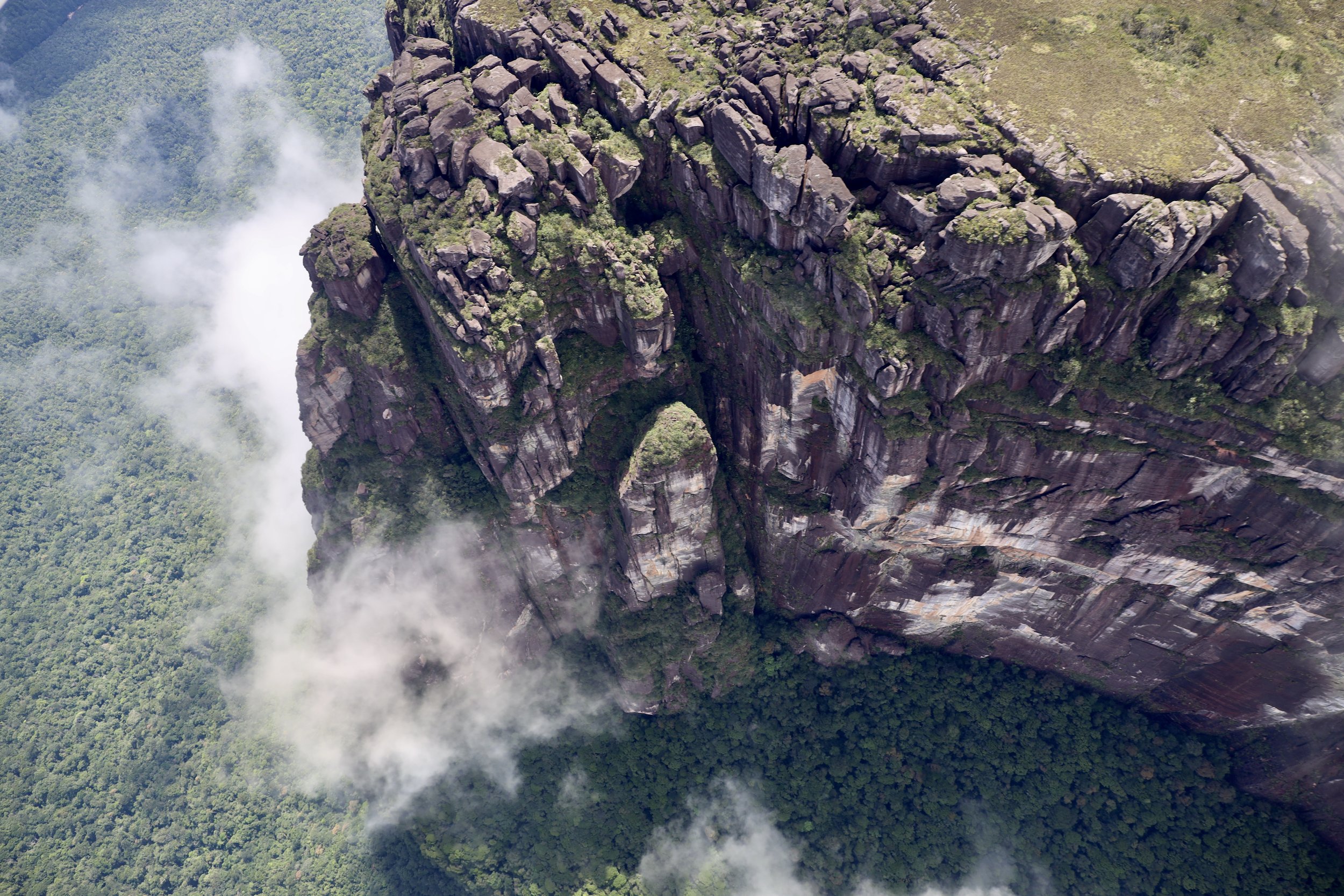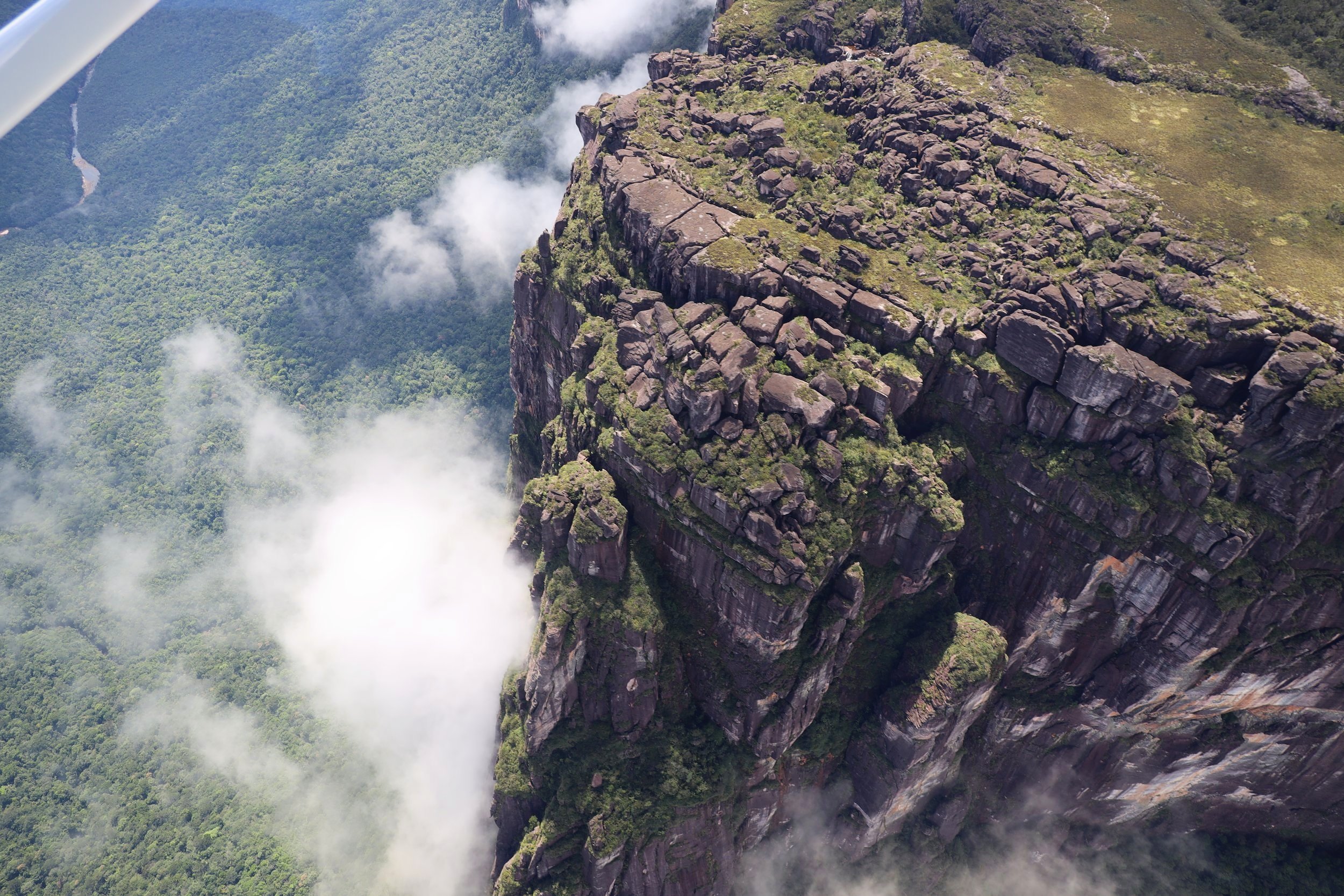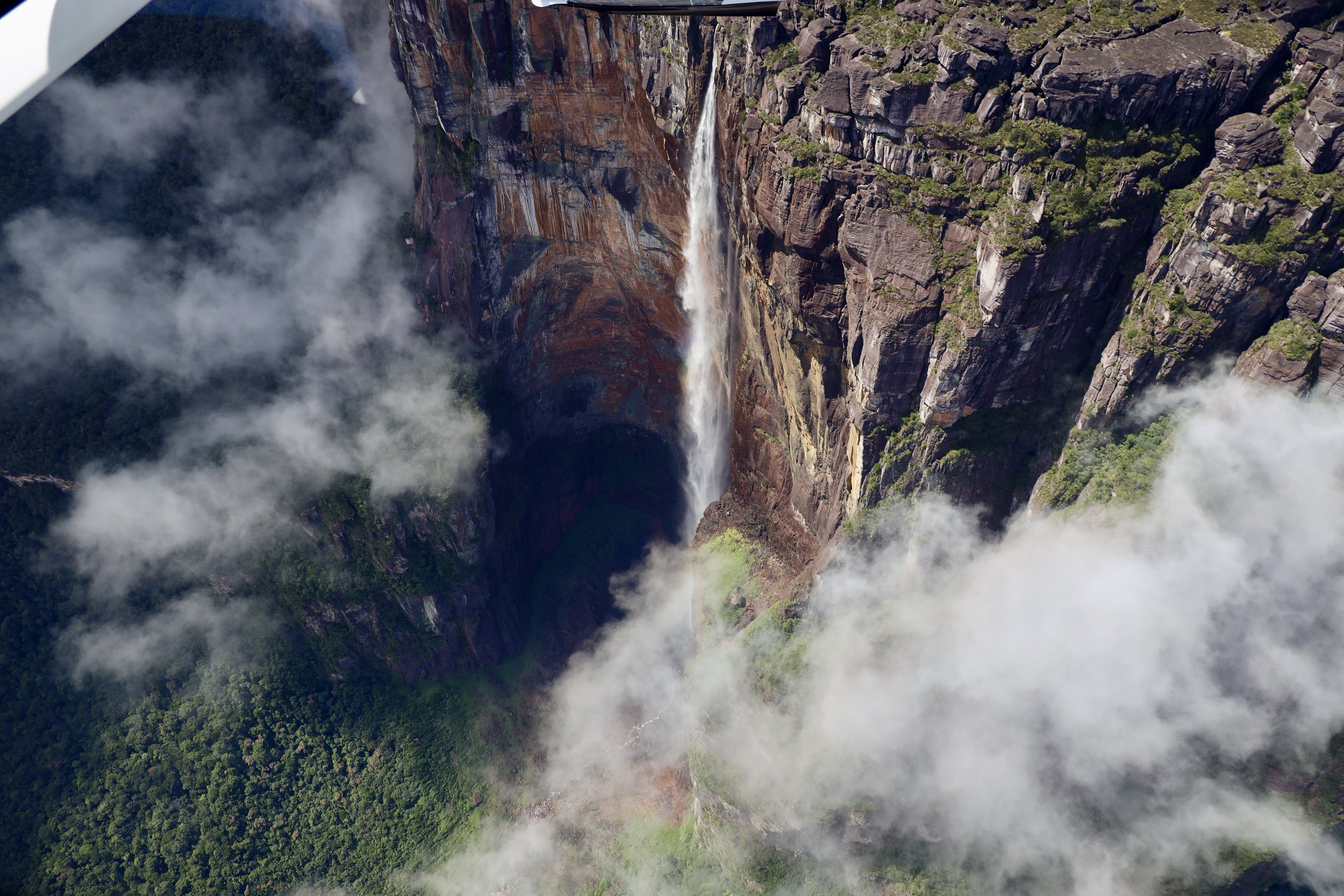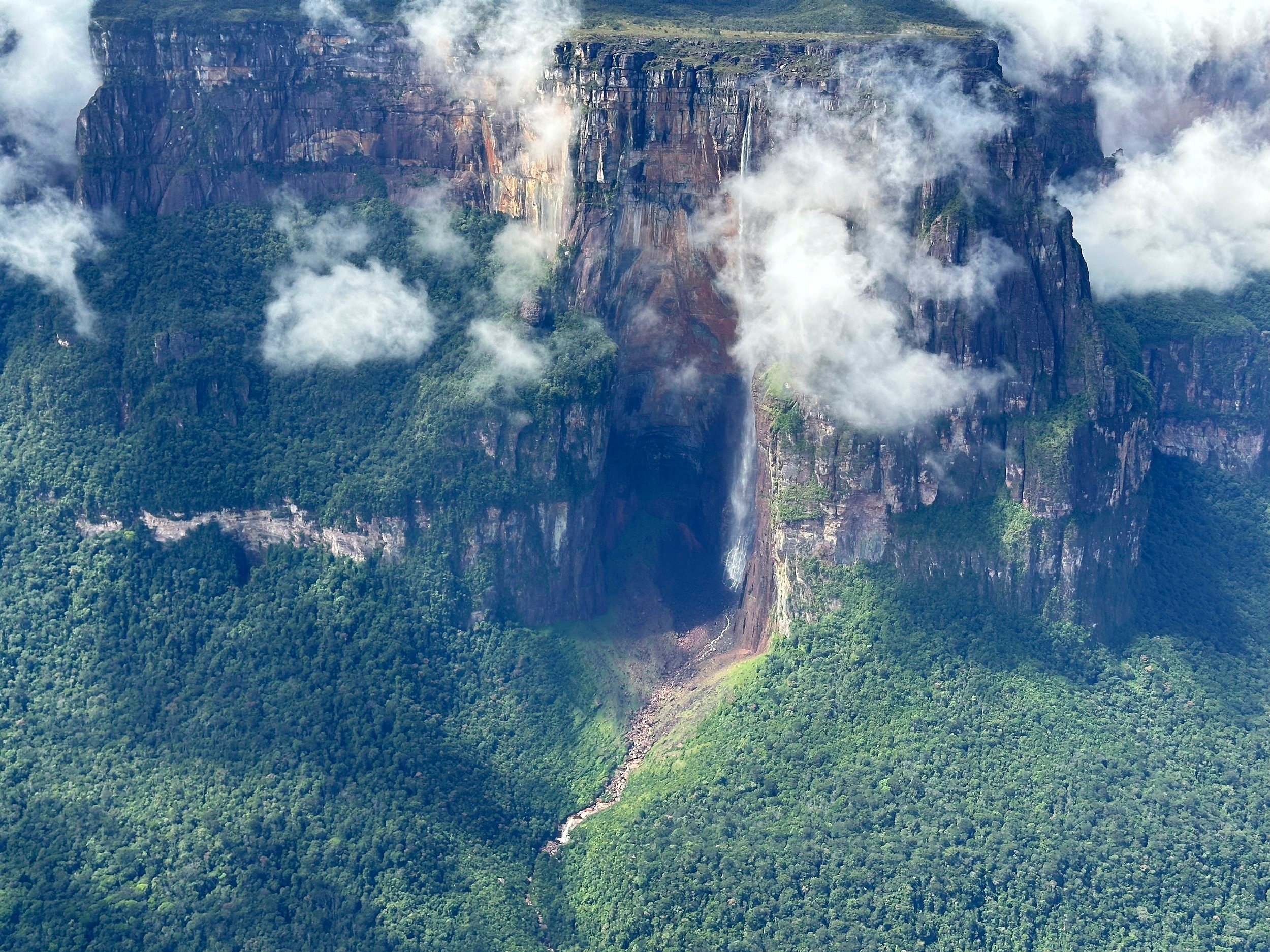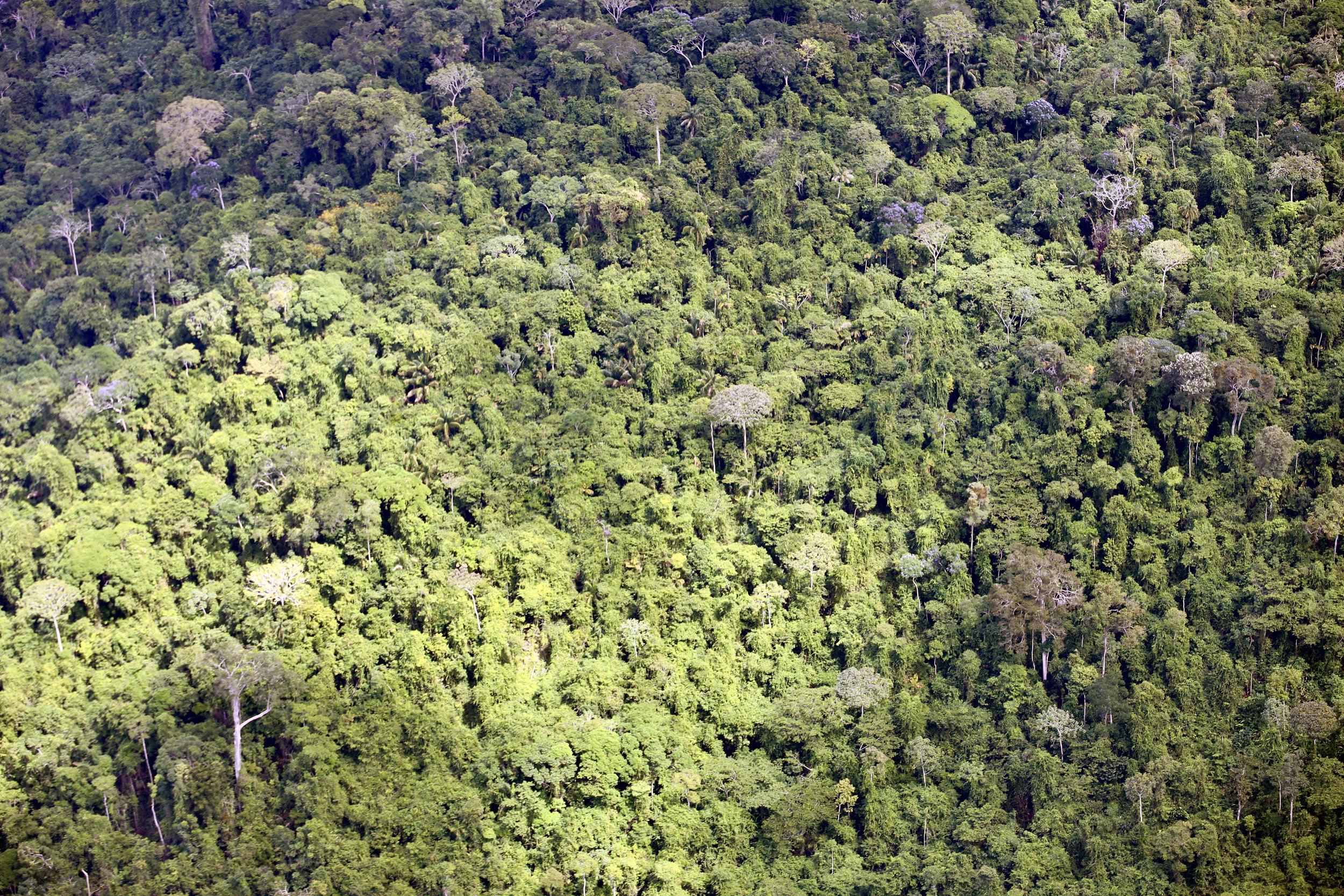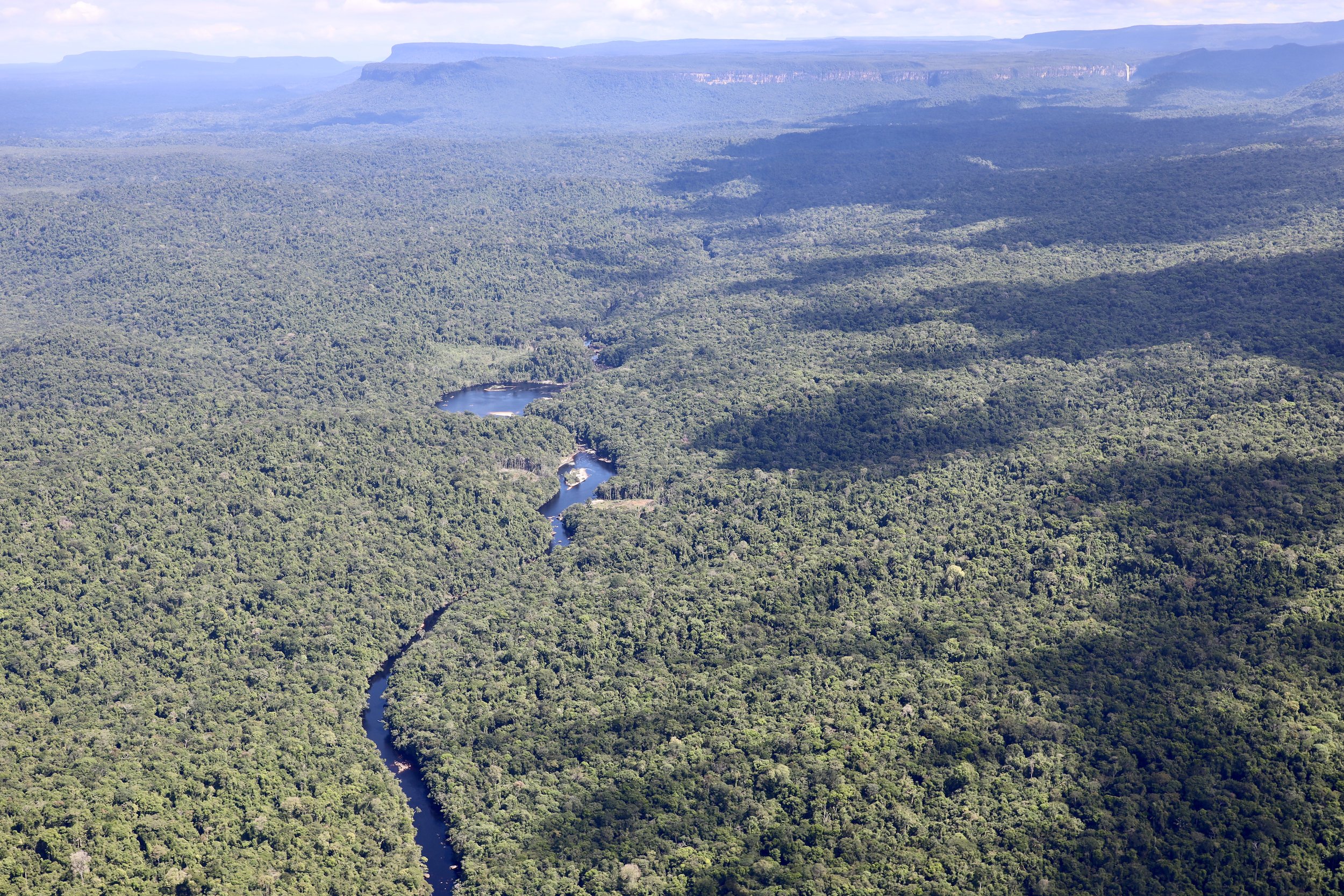Angel Falls waterfall is located in the Guiana Highlands in Bolívar state, southeastern Venezuela, on the Churún River, a tributary of the Caroní, 160 miles (260 km) southeast of Ciudad Bolívar. The highest waterfall in the world, the cataract drops 3,212 feet (979 metres) and is 500 feet (150 metres) wide at the base. It leaps from a flat-topped plateau, Auyán-Tepuí (“Devils Mountain”), barely making contact with the sheer face. The falls are located in Canaima National Park, and, because of the dense jungle surrounding the falls, they are best seen from the air.
The falls, first sighted by outsiders in the 1930s, were named for James Angel, an American adventurer who crash-landed his plane on a nearby mesa in 1937. In late 2009 Venezuelan Pres. Hugo Chávez declared that the falls should be referred to as Kerepakupai Merú, an Indigenous name.
The trip to Venezuela is not complete without a visit to Angel Falls. It is the journey to reach the falls that is probably more interesting than the destination itself (although the falls is spectacular in every way). The journey involves a boat ride up the Caroni and then Churun Rivers. The ride is against the current so the narrow boat has to fight the rapids and the strong river. The falls is located deep in the beautiful forest among the Tepuis inside the Canaima National Park. The Pemon people operate all the trips up the river from the village of Canaima.
Thanks to Ben from Osprey Expeditions and our guide Carlos for the very enjoyable experience in one of the most amazing places on our beautiful planet.
The very large Auyan Tepui. It is 700 Square Kms in size and its walls have a vertical relief of almost 1000m!
The falls, which cascade from the top of Auyantepui in the remote Gran Sabana region of Venezuela, were not known to the outside world until Jimmie Angel flew over them on November 16, 1933 while searching for a valuable ore bed.
On October 9, 1937, he returned to the falls with the intention of landing. On board his Flamingo monoplane were his second wife Marie, Gustavo Heny, and Miguel Delgado, Heny's gardener. He attempted a landing, but despite a successful touchdown, his aircraft El Rio Caroní nose-dived when it hit soft ground at the end of its landing run. The wheels sank in the mud, making take-off impossible.
The passengers were unharmed but had to trek across difficult terrain and with low food supplies for 11 days to make their way off the tepui and down to the nearest settlement at Kamarata. When word of their exploits got out, international interest in the Gran Sabana region increased dramatically, leading to in-depth scientific exploration in the following years.
His aircraft remained atop Auyantepui until 1970, when it was disassembled and brought down by Venezuelan military helicopters. Today, an El Rio Caroní can be seen outside the airport terminal at Ciudad Bolívar. The airplane was re-assembled in the city of Maracay's aviation museum
The small air strip in El Manteco from where we traveled to the village of Canaima.
Canaima National Park
The views from our flight to Canaima.
Canaima airstrip
Canaima Village
Beautiful Canaima Lagoon
Canaima Village
Canaima Village
Caroni River near Canaima
The large Auyan Tepui can be seen in the distance. We had to portage sections of the river to avoid the rapids and to lighten the boat to get across.
Caroni River
The rapids on the Caroni River
Caroni River
The Auyan Tepui
The Auyan Tepui and the Caroni River
The smaller but more turbulent Churun River
Working the way up the Churun River
Final section of the river before Angel Falls
This is the first sighting of Angel Falls as you clear the last bend of the Churun river. Spectacular!
The spectacular Angel Falls from the distance
The mesmerizing Angel Falls
Hiking up the the falls foreshortens it. It is difficult to appreciate the height of the drop. It is best seen from the air.
Standing at the viewpoint for the Angel Falls.
Angel Falls right before sunrise
Sunrise on Angel Falls
The Auyan Tepui from the air. The flight from Canaima is 45 min and the scenery is very spectacular!
The top of Auyan Tepui
Auyan Tepui
Looking down the wall of the Auyan Tepui
Angel Falls
The Angel Falls is well hidden and not visible until the airplane is in front of it.
A 1000m drop!
The steep walls of the Auyan Tepui.
The river of Angel Falls
Churun River. The location of the jungle camp for hiking to the base of Angel Falls. The location of the camp is in the white squares among the trees by the river.
Churun River and the camp.
Angel Falls
Angel Falls
Churun River
Churun River
Churun River
Churun River
The Caroni and Churun Rivers
Caroni River
The tepuis near the village of Canaima
